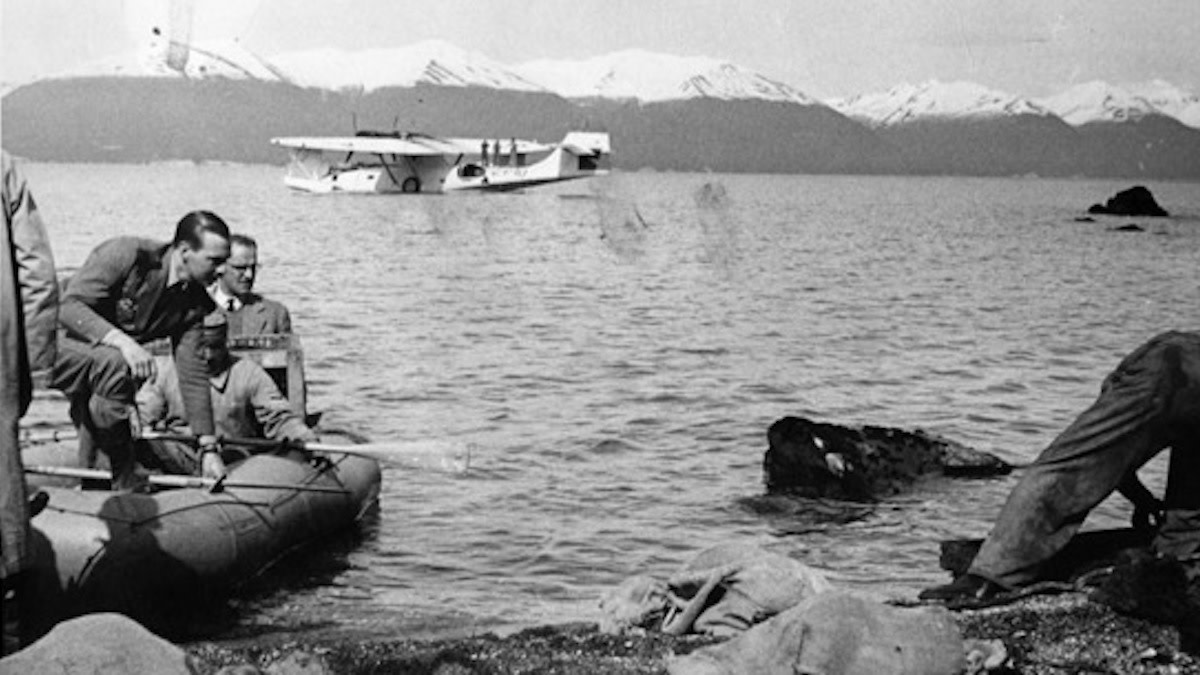
In North America, beavers are increasingly seen as ecological superheroes, engineering riparian ecosystems in ways that benefit everything from songbirds to moose.
But South America? That’s a different story. On the southernmost tip of South America—Tierra Del Fuego— the bucktoothed, flat-tailed rodents are considered a foreign menace. How they got to the wrong end of the world is a convoluted tale of power, politics, and ecology.
In the years after World War II, fabled Argentine strongman Juan Peron was in control of the country. Poverty was widespread, and Peron built power by advancing programs intended to create jobs.
While Peron generally focused on roads and dams, one of Peron’s schemes was to import beavers and set them loose in Tierra del Fuego. The Peron regime imagined a lucrative fur industry based on beaver pelts. The Argentine government called Canada’s Hudson’s Bay Company to order 50 beavers.
The beaver reintroduction job fell to pioneering Canadian bush pilot Tom Lamb. According to Lamb’s written account, Lamb live-trapped 20 beavers from the Manitoba bush before ice stopped him in the fall of 1946. He built pens out of barrels and had them shipped by train to Winnipeg. The Argentine government paid Lamb $650 Canadian per beaver. That would be about $11,000 Canadian per beaver today.
From Winnipeg, Lamb loaded the animals aboard a double-prop seaplane called a Conso. These seaplanes were famous Navy planes in World War II, built for long-distance bombing raids and landing on water instead of requiring runways.
Lamb had converted a warplane to a cargo plane and flew the industrious creatures to a new home. That’s a straight-line distance of 7600 miles. However, in order to refuel, Lamb had to fly a more circuitous path via New York City, Miami, Brazil, and Uruguay to get there.
Lamb’s letter said he scheduled a layover day in Miami and rented a refrigerated storage unit to hold the animals while he rested. The beavers chewed through the wooden door, causing a bit of a panic. “All the beavers were running around the long office, the girls were standing on top of tables and typewriters, some job to gather them all up,” Lamb wrote.
Eventually, Lamb arrived at the outpost of Ushuaia, which at the time claimed to be the southernmost city in the world. There, he found a promising river and cut the beavers free.
As is so often the case with wildlife translocations, the unintended negative consequences far outweighed Peron’s hoped-for benefits. Trapping never caught on, and the beavers boomed in their new island home. They did what beavers do—chew up trees, dam up streams, and make more beavers. Instead of creating an economic boon, the beavers created both ecologic and economic havoc. They flooded pastures used by sheep and llamas, rendering the land useless. They ruined roads and other infrastructure with their instinctive drive to plug drains and culverts.
In the northern hemisphere, beavers evolved in their ecosystem for millions of years. Biologists have documented how beavers are environmental engineers that create wetlands wherever they go. Up North, many species have developed symbiotic relationships with beavers, from moose to trout to songbirds, that thrive on the shrubby wetlands that beavers create.
But in South America, beavers actually diminished biodiversity instead of increasing it.
Ironically, while exotic invasive beavers were booming across Tierra Del Fuego, North America also received a mega-rodent from the southern hemisphere. Nutrias: a large, swamp-dwelling rodent that live throughout South America, including Argentina.
In the 1940s and ‘50s, people released nutrias all across North America, also intending to create a fur resource that never materialized. Now widely considered a pest in the US, nutria are loathed for devouring native plant life and burrowing into dikes, levees, and roadways.
Lamb said the Peron Regime followed up by asking for another shipment of moose, caribou, and muskrats, but that officials in Canada nixed that export. Perhaps just as well.
Lamb passed away in '69 but remains a local legend in Northern Manitoba. His bush-flying career led to the founding of Lamb Airways (known as Lambair) in 1935 and contributed significantly to the exploration and development of northern Manitoba and the Eastern Arctic. He helped deliver food and supplies to struggling Inuit communities and even pioneered a method of "muskrat farming" when he saw their populations plummet from the fur trade. Essentially, he made a number of muskrat homes and petitioned the government to flood a large portion of land for them. He was able to sustainably harvest muskrats for a number of years using this method.

Images via Andrew Morrish.




Conversation